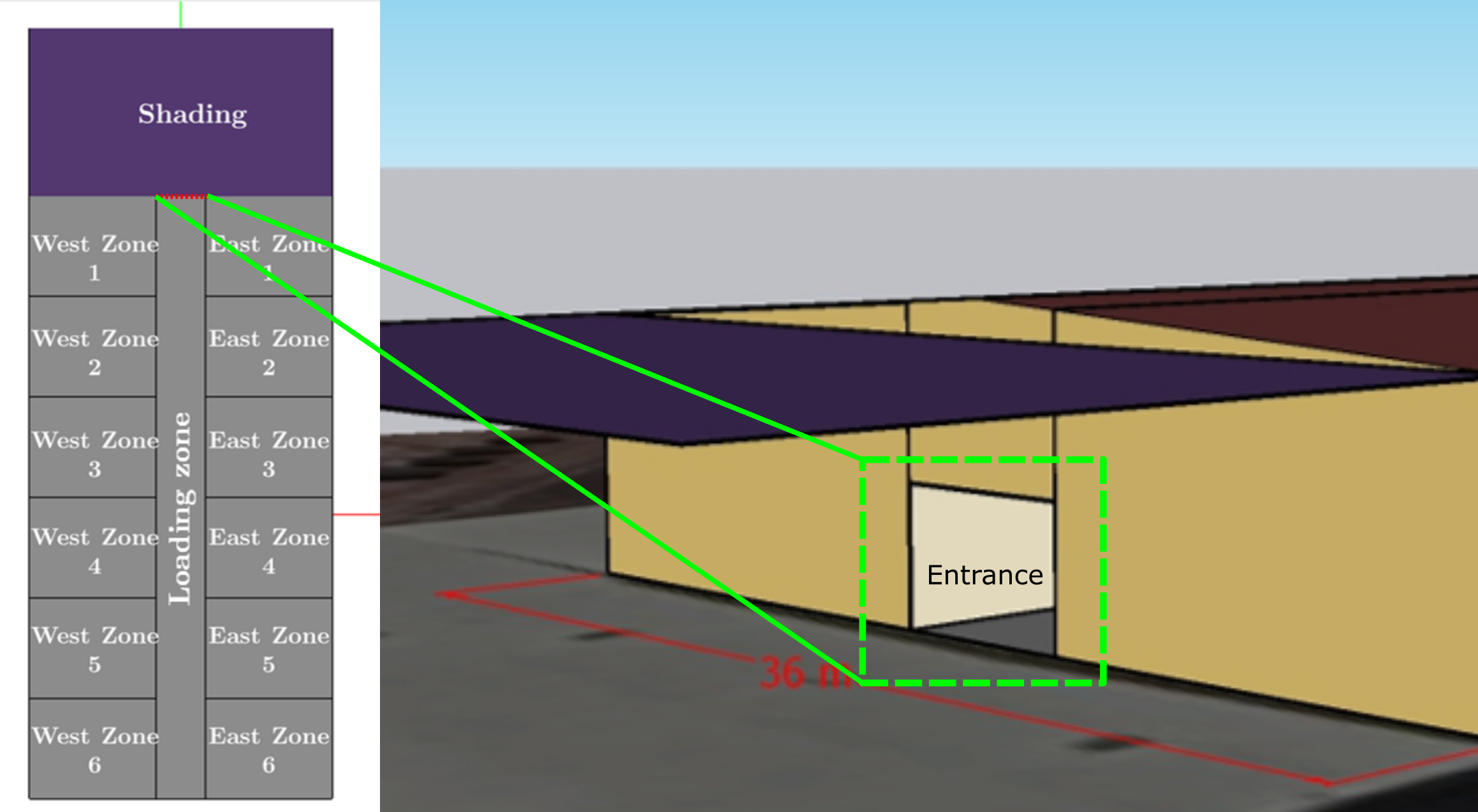Defining an Always-Open Entrance Exposed to Outdoor Conditions
Hellow everyone,
I am currently working on a construction model (here) that includes an always-open entrance that is directly exposed to outdoor conditions.
Here's what I've tried so far: I set up a very thin door construction for the entrance using the Material:NoMass object, with a thermal resistance of 0.00385 m2.K/W. However, it seems like this setup isn't quite realistic since it doesn't account for infiltration, given that the entrance is exposed to outdoor conditions.
I am seeking guidance on the appropriate method to define this opening to specify the properties of air flow through it.
Also, if anyone is familiar with the AirFlowNetwork (AFN) model, I'd appreciate any guidance on how to use the AFN for modeling the infiltration through the entrance.
Thank you in advance for any assistance you can provide.







